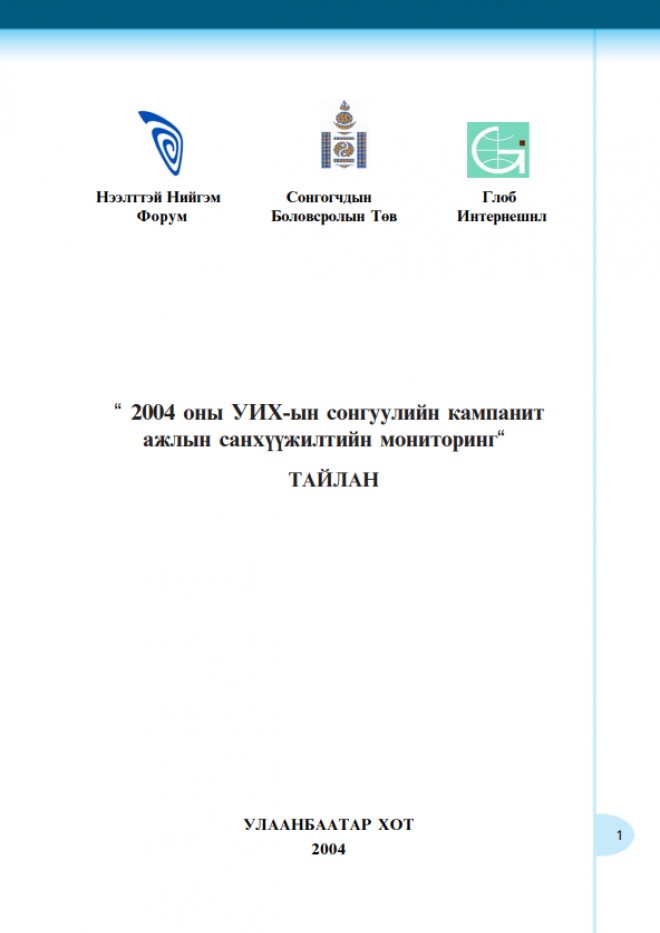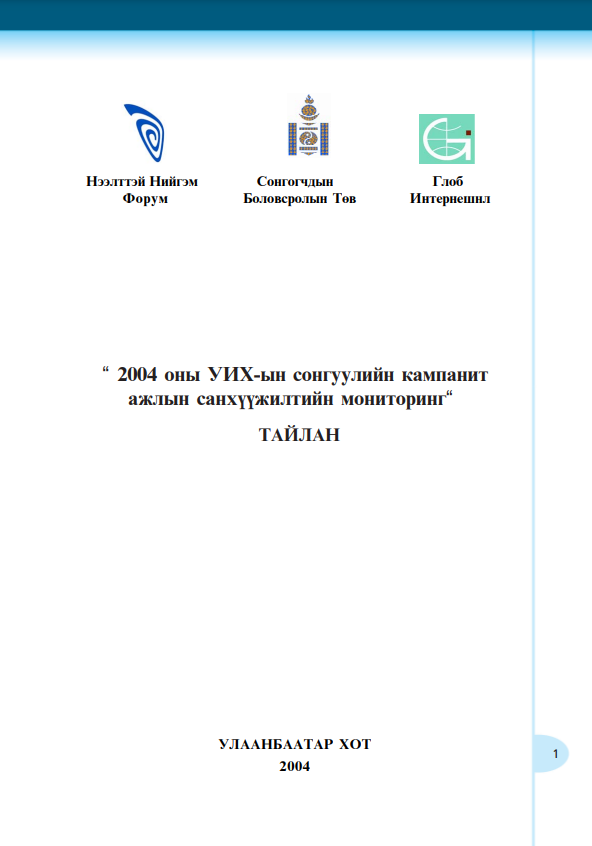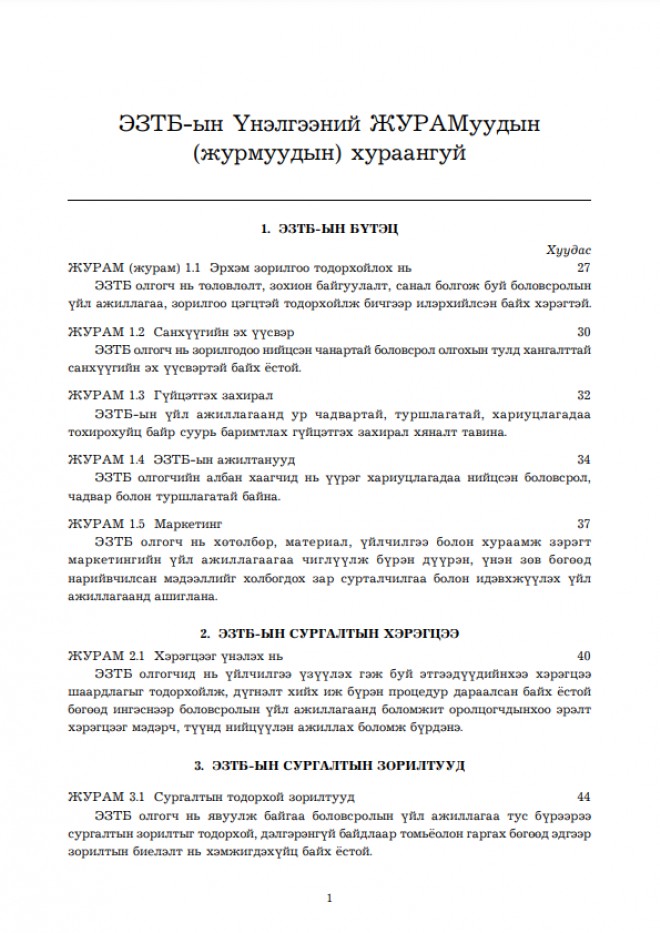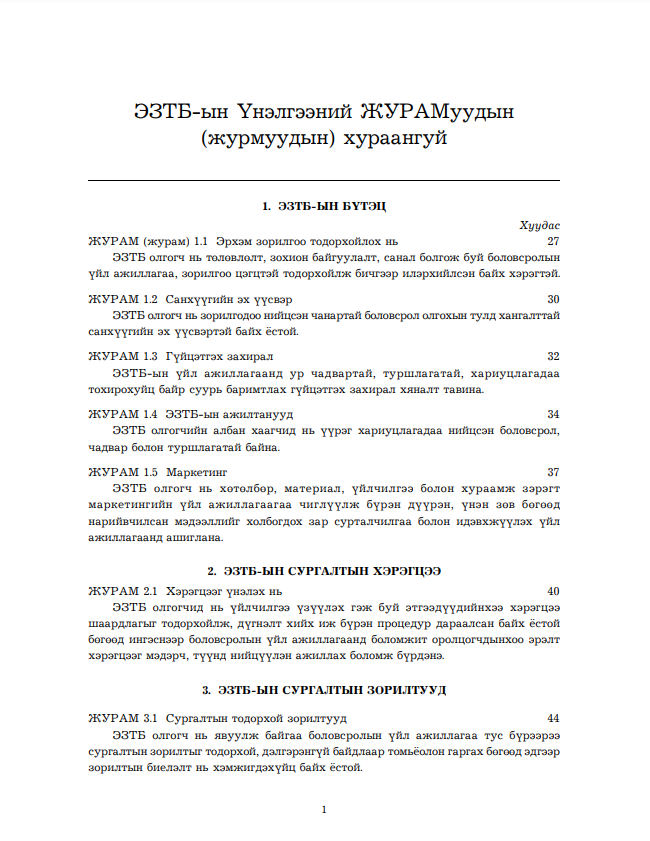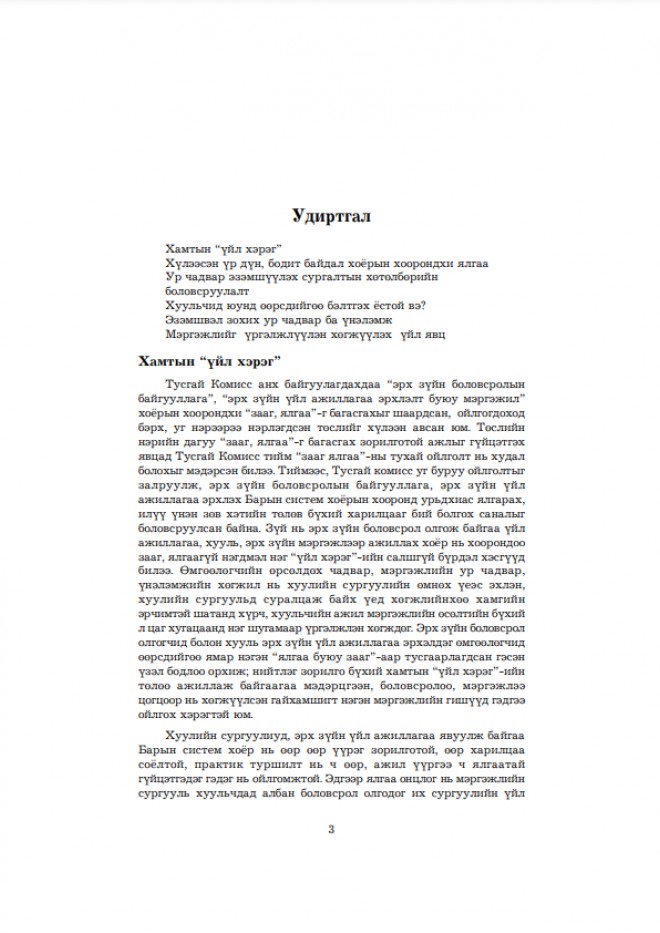Mongolia 2021: Scenarios
What are “scenarios”?
Scenarios are stories about possible futures. While we cannot predict the future, especially 10 years from now, we can think about it intelligently. Scenarios are a way to create plausible, consistent and provocative representations of possible futures, so that we can consider their implications. Scenarios answer the question “What if.....?” They recognize that the world is uncertain and that we and our children may be living in a future very different from the one we anticipated.
Why Mongolian scenarios?
One thing is certain in Mongolia - we are aware that the country has vast mineral resources. However, many things are uncertain - what will market demand be? will prices rise or fall? will these resources benefit all Mongolians, or just a segment of the population? will we waste the revenues we get, or will we invest them wisely...? Our goal is to present the Mongolian people - citizens, leaders, intellectuals, businessmen and women - with coherent stories about the future which we may face, depending on choices we make in the next months and years.
How did we develop the scenarios?
Open Society Forum is experienced with scenarios. In 2003-2004 we produced the Mongolian Economic Development Scenarios which led to many discussions about critical economic choices the nation was facing. Based on its experience OSF decided to develop scenarios “Mongolia in 2021” which each scenario will depend on how the country will spend its revenue from extractive industries. For these scenarios, we assemble about 30 representatives from the business, government and civil society sectors; we met in three plenary sessions and many smaller group sessions to develop and refine the scenarios. We were assisted by Skillful Means, Inc. a consultancy focused on strategy planning and scenario development and by experts from Revenue Watch International, a nonprofit focusing on resource transparency globally.
Scenarios are created from “driving forces”, critical factors which in some cases are relatively certain - population growth, for example - and in other cases are importantly uncertain -developments in neighboring countries, for example. We began by identifying the concerns of Mongolians about the management of our mineral resources and the management of the revenues which we expect. We then looked at various ways of distinguishing the scenarios from each other. We settled on an “axis” and three key questions which might lead to very different futures.

We also agreed on elements that would be addressed in each scenario - inflation, GDP, mining sector revenues, employment, exchange rates, etc. - and the characters—notably Zaya - in our scenario stories. Then we divided into four teams and started writing the scenarios. The scenarios are the story of Zaya and her friends and family, to show what might happen to ordinary Mongolians under each of the scenarios depending on how the country will spend its revenue from mining. In reading the scenarios, it is important to remember several things. Most importantly, the scenarios are not projections or predictions; we are not claiming that the future will in fact unfold precisely or even roughly along these lines. When reading the scenario, we ask that you consider only three questions: is the scenario plausible (might it happen, even if not exactly as the writers suggested)? Is the scenario coherent (does it reflect a sound internal logic)? Is the scenario provocative (does it make you think)?
Монголын уул уурхайн салбарын өрсөлдөх чадвар ба тогтвортой байдлын гэрээ
Монголын уул уурхайн салбарын өрсөлдөх чадвар ба тогтвортой байдлын гэрээ
Хэвлэн нийтэлсэн: Эдийн засгийн бодлогын шинэтгэл өрсөлдөх чадварын төсөл
Он: 2004
Файлын төрөл: pdf
Файл: /uploads/site/1126/res_mat/MiningSectorStabity_mong.pdf
Түлхүүр үг: Монгол улсын эдийн засгийн өрсөлдөх чадвар, уул уурхайн салбар, ашигт малтмалын тухай хууль, уул уурхайн салбарын өрсөлдөх чадвар, тогтвортой байдлын гэрээ, уул уурхайн эрх зүйн орчин, засгийн газрын бодлого, Монголын байгалийн нөөц баялаг ба ашиглалт
Хэвлэн нийтэлсэн: НҮБ-ын Хөгжлийн хөтөлбөр
Он: 2004
Файлын төрөл: pdf
Файл: /uploads/site/1126/res_mat/Citizens card.pdf
Түлхүүр үг: хэрэглэгчийн үнэлгээний карт, ядуурлыг бууруулах бодлого, оролцооны арга, үйлчлүүлэгч хэрэглэгчийн үнэлгээ, хэрэглэгчийн сэтгэл ханамж, Монгол
Хэвлэн нийтэлсэн: Азийн Хөгжлийн Банк
Он: 2004
Файлын төрөл: pdf
Файл: /uploads/site/1126/res_mat/Func_regions_pap4_mong.pdf
Түлхүүр үг: бүс нутгийн хөжглийн бодлого, Монголын функциональ бүс нутгууд, бүс нутгийн хөгжил, хүмүүнлэгийн үйлчилгээ, эдийн засгийн хөгжил
Бүсчилсэн хөгжлийн удирдлага, төлөвлөлтийн бүтэц зохион байгуулалт
Бүсчилсэн хөгжлийн удирдлага, төлөвлөлтийн бүтэц зохион байгуулалт
Хэвлэн нийтэлсэн: Азийн Хөгжлийн Банк
Он: 2004
Файлын төрөл: pdf
Файл: /uploads/site/1126/res_mat/Reg_adminplan_pap7_mong.pdf
Түлхүүр үг: бүсчилсэн хөгжлийн удирдлага, бүсчилсэн хөгжлийн бүтэц зохион байгуулалт, бүс нутгийн бодлого, бүсчилсэн хөгжлийн хамрах хүрээ, Монгол улсын бүсийн хөгжлийн бодлого
УИХ-ын 2004 оны сонгуулийн кампанит ажлын санхүүжилтийн мониторинг
УИХ-ын 2004 оны сонгуулийн кампанит ажлын санхүүжилтийн мониторинг
Хэвлэн нийтэлсэн: Азийн Хөгжлийн Банк
Он: 2003
Файлын төрөл: pdf
Файл: /uploads/site/1126/res_mat/reg_dev_ec_mong.pdf
Түлхүүр үг: Монгол улсын макро эдийн засгийн бодлого, хөдөлмөрийн зах зээл, мөнгө санхүүгийн салбарын хөгжил, гадаад худалдаа, төсвийн бодлого, төсвийн байгууллагын удирдлага санхүүжилтийн тухай хууль, бүсчилсэн хөгжлийн удирдлага зохицуулалтын тухай хууль, орон нутгийн захиргааны бүтэц
Хэвлэн нийтэлсэн: Азийн Хөгжлийн Банк
Он: 2004
Файлын төрөл: pdf
Файл: /uploads/site/1126/res_mat/reg_dev_finalreport_mon.pdf
Түлхүүр үг: бүс нутгийн хөгжил, дэд бүтэц, бүс нутгийн эдийн засаг, техник туслалцаа, эдийн засгийн бодлого
Хэвлэн нийтэлсэн: ADB
Он: 2004
Файлын төрөл: pdf
Файл: /uploads/site/1126/res_mat/reg_dev_finalreport_eng.pdf
Түлхүүр үг: ADB and Mongolia, capacity development, regional development indicator, regional development policy, technical assistance and Mongolia





